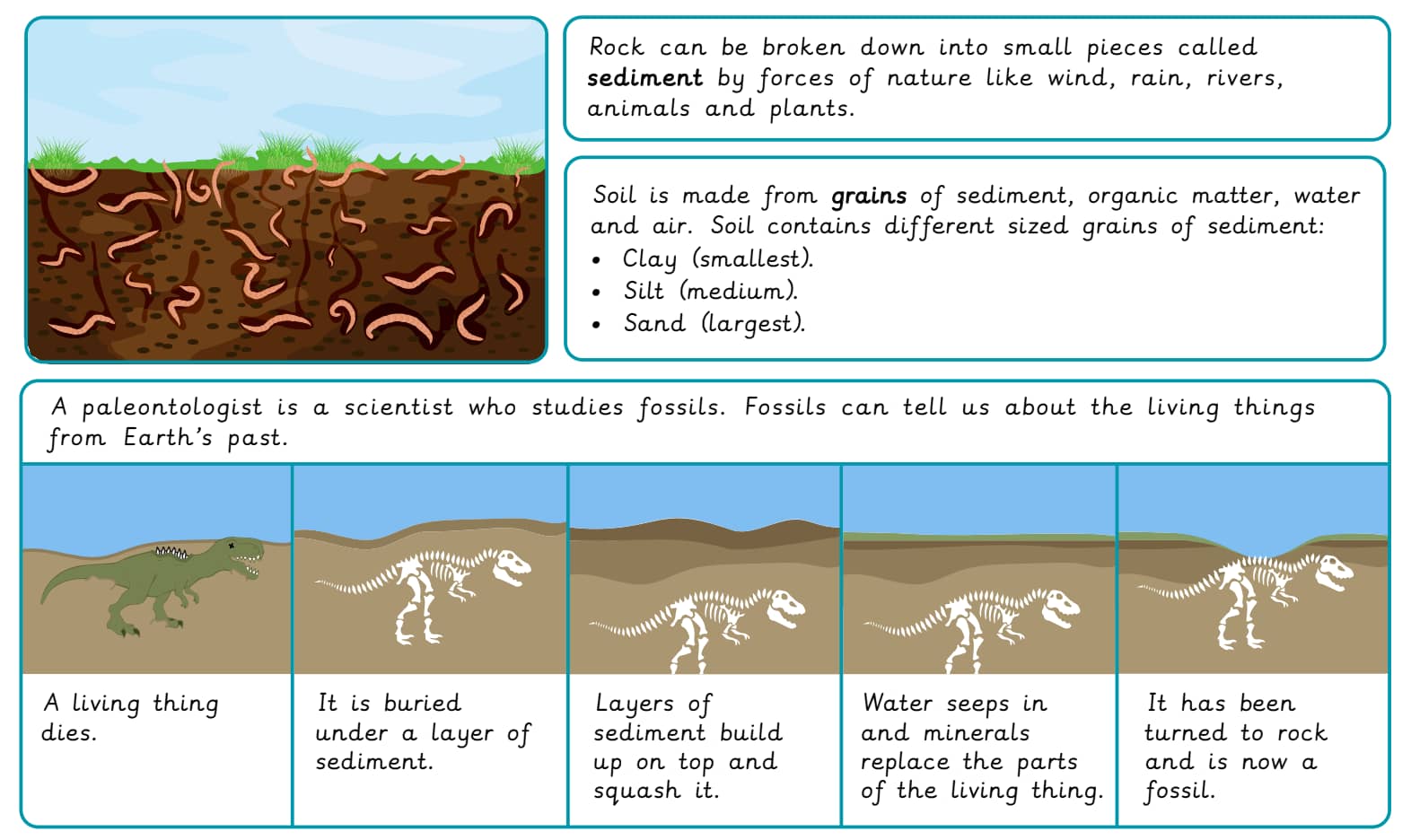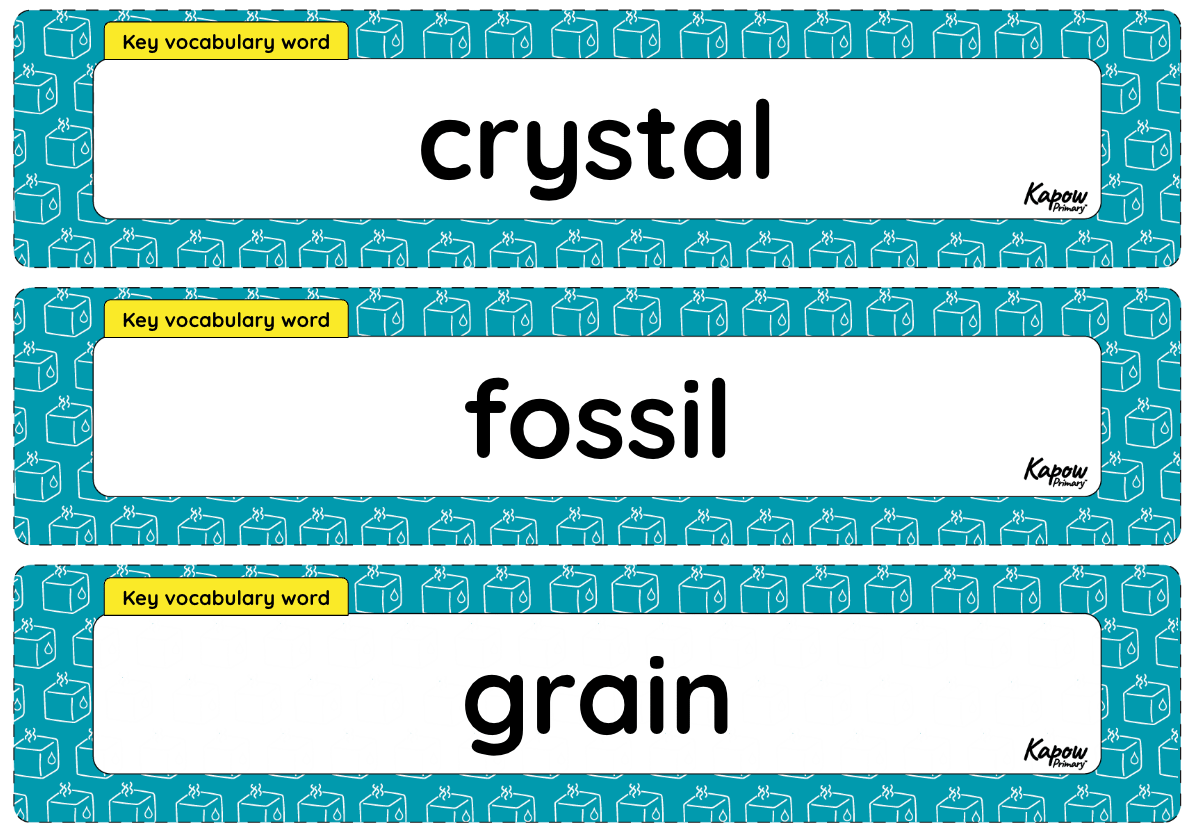Y3/4 (A): Materials: Rocks and soil
Exploring the physical properties of rocks and soils and fossil formation.
The Curriculum and Assessment Review final report has been released. We’re reviewing the recommendations and planning for future updates. Learn more
Unit outcomes
Pupils who are secure will be able to:
- Define the term rock.
- Describe the appearance of different rocks, identifying both crystals and grains.
- Group rocks by their absorbency, hardness and reaction to acid rain (vinegar).
- List the different factors that break down rocks.
- Describe fossil formation and identify fossils in rocks.
- Describe the work of a palaeontologist.
- Name, describe and compare some different categories of soil.
- List some of the benefits of earthworms to the soil.
- Identify and describe the comparative size and weight of the layers in a sedimentation jar.
When working scientifically, pupils who are secure will be able to:
- Use a magnifying glass correctly to observe the appearance of a rock in detail.
- Use results to choose the appropriate rock type for a specific use, suggest a better choice of rock for a specific use and predict how a rock will be affected by the weather.
- Research and present information on fossil formation using a single source.
- Use a model of the fossil record to determine the relative age of a fossil, to suggest how a living thing has changed over time and to suggest what living things were around in a certain era.
- Draw and label the bars on a bar chart.
- Accurately draw and label the layers of sediment in a sedimentation jar.
Please note that Kapow Primary Science lessons are designed to be 1 hour and 30 minutes long to reflect the requirements of a core subject.
Suggested prior learning
Y1/2 (B): Materials: Uses of everyday materials
Get startedLessons
Y3/4 (A): Lesson 1: Rocks: Appearance
Knowledge
- To group rocks using their appearance.
Working scientifically
- To observe the appearance of rocks closely, using a magnifying glass.
Y3/4 (A): Lesson 2: Rocks: Physical properties
Knowledge
- To group rocks using their physical properties.
Working scientifically
- To make predictions, suggest improvements and explain observations over time.
Y3/4 (A): Lesson 3: Fossil formation
Knowledge
- To describe the process of fossil formation.
Working scientifically
- To present research on fossil formation.
Y3/4 (A): Lesson 4: Fossils and palaeontology
Knowledge
- To identify fossils and group rocks accordingly.
Working scientifically
- To use the fossil record to answer questions about the past.
Y3/4 (A): Lesson 5: Soil formation
Knowledge
- To compare soils and how they were formed.
Working scientifically
- To record the drainage rate for different soils in a bar chart.
Y3/4 (A): Lesson 6: Soil layers and earthworms
Knowledge
- To describe a soil sample using sedimentation.
Working scientifically
- To draw and label a diagram.
Key skills
Key knowledge
Related content
Unit resources

Knowledge organiser – Science Y3/4 (A): Materials: Rocks and soil
Aimed at pupils, three pages providing key facts and definitions from the mixed-age unit ‘Rocks and soil’.

Vocabulary display – Science Y3/4 (A): Materials: Rocks and soil
A display version of the vocabulary from the mixed-age unit 'Rocks and soil'.
Cross-curricular opportunities
Mathematics: Statistics.
British values: Mutual respect; Democracy.

